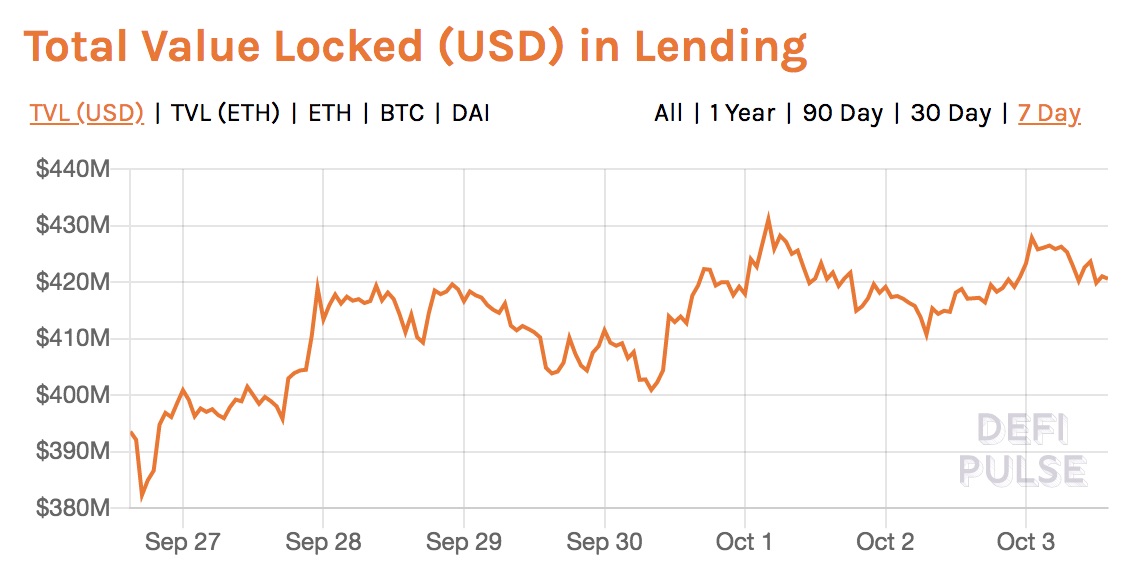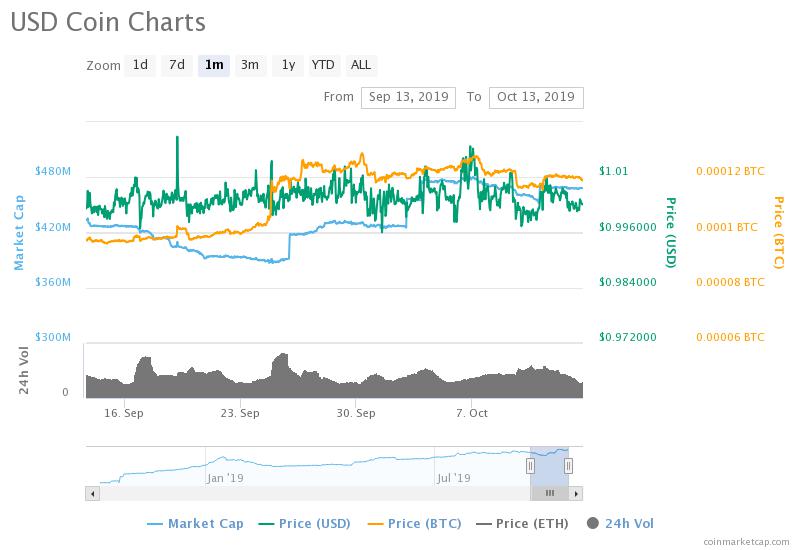How Tether Could Destroy Other Stablecoins By Waging An Interest War
Interest rates could become a war of attrition for the largest providers.

Share this article
Crypto revenue models are becoming more elaborate – and as the aftermath of a prolonged bear market takes its toll, creative solutions to attract and retain customers are becoming de rigeur.
Coinbase’s U.S. customers received a welcome surprise earlier this month, after the cryptocurrency exchange announced interest on users’ USDC deposits.
Paid in monthly installments at an annual percentage yield (APY) of 1.25%, the initiative is meant to encourage users to leave their coins on the exchange, rather than convert them to fiat. The interest rate is similar to that offered by a conventional bank account.
The concept isn’t new. Interest payments are a cornerstone service in the rapidly expanding DeFi sector. Projects like Compound and Celsius Network have long offered users interest on their holdings, and exchanges like Binance are also opening new lending facilities in a handful of popular digital assets.
Data collected by DeFi Pulse shows that there was more than $550.3M of assets locked up in decentralized lending applications at the time of writing.

But what would happen if stablecoin providers, including Tether (USDT), started offering interest? To be clear, Paolo Ardoino, Tether CTO, told Crypto Briefing that they do not have any plans to introduce such a facility yet, so what follows is pure hypothesis.
But let’s consider what would happen if rather than signing up for a specific service, the very act of owning a stablecoin entitled the holder to receive interest.
Adding interest to stablecoins: a hypothesis
Crypto analysts Hasu and Su Zhu considered the idea back in February. Pointing out that stablecoin providers themselves already earn interest from their collateral, and could pass some of it onto their users to stay competitive
“Because it is so hard to offer any meaningful distinction from your competitors, it’s likely that the next push after the FUD war and ensuring transparency war will be a price war,” reads their article. “Stablecoin providers will have to start paying interest to their holders or be outcompeted. We saw a glimpse of that when Gemini briefly allowed customers to buy their $1 token for only $0.99 — a full 1% discount.”
But adding interest to the stablecoin market turns it into a straight-up slogging match. For the end-user, there is very little to distinguish one dollar-backed cryptocurrency from another. To retain users who can so easily transfer value into another stablecoin, providers will be forced to raise interests as high as they can in order to remain competitive.
Let’s go to the numbers. Assuming an overall annual interest of 2.5% on USD holdings, we can determine how the main stablecoin providers stack up to one other.
Based on circulating supplies, TrueUSD (TUSD) would make TrustToken an income of around $4.7M every year, with Paxos Standard earning just over $6.4M from PAX tokens. Gemini exchange would take home $231,100 from GUSD, with the CENTRE Consortium (comprised of both Coinbase and Circle) making $11.74M. Adding in the new interest paid to Coinbase users, that figure is cut in half to approximately $5.6M.
But the elephant in the room is Tether. Based solely on the 4.1bn USDT reported as Tether’s total liabilities, the stablecoin provider could expect to make over $100M every year in interest from the USD collateral it holds.
Add in the circulating supply that is fully-collateralized by cash reserves, roughly 74% as per what Tether told the New York Supreme Court back in late April, and the revenue falls down to $77.5M – still the largest out of any of the stablecoin providers.
Based on the figures in front of us, Tether could introduce interest at 1.25%, similar to the one now offered by Coinbase and still earn more than $38M.
A war of attrition
It’s a different picture for the other providers. While Gemini also has an exchange business, the interest earned from fiat holdings is the only means Paxos Standard and TrustToken earn revenue. Sharing with holders would, at best, halve their profits and might even impinge on operational expenses.
Unfortunately, these smaller providers may not have much of a choice. As Hasu and Zhu highlighted, the exit costs for stablecoins are minimal. Holders aren’t locked into contracts or liable to a penalty fee for redeeming tokens. With so many providers to choose from, the value will move to the asset offering the best deal, which in this case could be the highest interest rate.
A week after Coinbase started offering interest, circulating supply jumped up by $30M. Although the increase will certainly improve overall income and thereby offsetting some of the interest payouts, deposits have since mellowed out suggesting that, for the time being at least, the new interest facility has not led to a significant increase in market share.

Of course, a similar option is open to Coinbase’s rivals. But if everyone starts offering interest, it will be the provider with the best rates that has the key advantage. Gemini and Coinbase can use revenue from their exchange to provide competitive rates, at least temporarily, but smaller providers who may not be in a position to offer interest rates as it now stands could be priced out.
Tether has a first-mover advantage. It has been operational since 2015 and has had a plus-billion dollar market cap since 2017. It has the largest revenue stream, and we can assume keeps some of it in reserve – possibly forming part of what Bitfinex used to cover its own shortfall in April.
Regardless of how well collateralized individual USDT tokens are, the point is Tether has some headroom. Between January and July 2018, when circulating supply was roughly half of what it is today, a Bloomberg investigation found Tether earned $6.6M in interest from its USD reserves. It could temporarily forgo interest it currently earns as revenue to make itself the most competitive stablecoin provider.
Say it started offering users interest at 2.5%, it would immediately have the highest rate, making it the most competitive stablecoin and even beating some of the rates offered at traditional banks.
While other providers might be able to offer similar rates, Tether has the capacity to go on for the longest and the highest, even to the point where it tops up interest so it actually starts paying users to hold Tether.
Coinbase may have fired the first shot on the arms race between stablecoins. Obviously, they saw it as a way to incentivize users to hold value on their servers, rather than as a major overhaul of the stablecoin model.
Whether other stablecoins begin introducing their own interest-earning facilities remains to be seen. But if it turns into an all-out brawl between leading providers, it could ultimately turn out to be Tether’s coup de grâce.
Share this article
